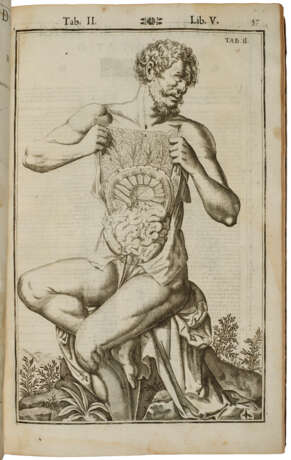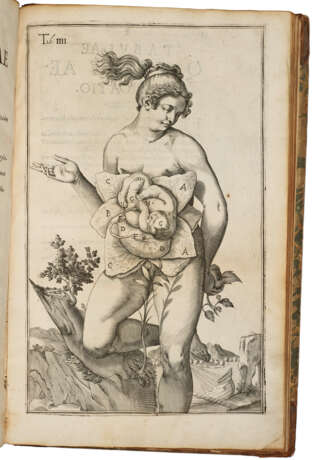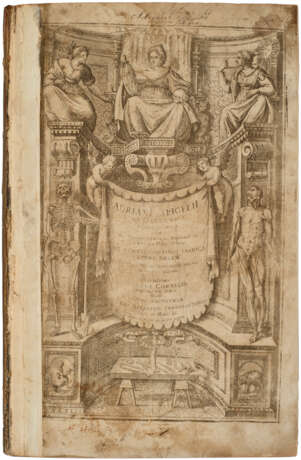ID 1236265
Lot 35 | De humani corporis fabrica libri decem
Estimate value
$ 3 000 – 5 000
First edition of this original series of anatomical plates drawn by the late-Mannerist Italian painter and printmaker Odoardo Fialetti. Since before 1600 Casserio had been working on a fully-illustrated anatomical treatise, which he hired Fialetti to illustrate. His De Vocis of 1601 concludes with a promise to publish a treatise on the anatomy of the whole human body with illustrations. However, at the time of his early death in 1616 Casserio left 86 spectacular anatomical drawings by Fialetti, and also possibly their engravings—but no text. Casserio and the co-author of this work, Adrian van der Spiegel, had both studied under Fabricius ab Aquapendente the University of Padua, and in 1608 Casserio succeeded Fabrici in Padua's chair of surgery and anatomy, which passed in turn to Spiegel upon Casserio's death in 1616. Spiegel wrote an unillustrated treatise on anatomy that remained unpublished during his lifetime; in his will he appointed Daniel Bucretius to see the work into print.
To illustrate Spiegel's treatise, Bucretius obtained 77 of Fialetti's original 86 anatomical plates from his Casserio heirs, and commissioned 20 more by Fialetti and Valesio to complete the series (the remaining 9 plates left by Casserio were used to illustrate Spiegel's De formato foetu, also bound in the present volume. Choulant-Frank 225; Garrison-Morton 381; Heirs of Hippocrates 414; NLM/Krivatsy 2202; 11297 (citing Casserio's and Spiegel's works separately).
Three works in one, folio (385 x 243mm). First two works bound mixed up, beginning with the engraved title of Spiegel's text, followed by the 97 plates Casserio provided for the text, followed by Spiegel's text, ending with the engraved title of Casserio's work. Third work with letterpress title and 9 engraved plates. (First engraved title soiled and remargined at gutter just touching plate, scattered soiling, dampstained.) Later calf-backed boards (spine perished but sewing sturdy, both boards detached). Provenance: a few early marginal notes, including one pointing out that the book was "published in the time of Charles the first" – gift inscription of R.B. Preble to Porter S. Dickinson, 25 December 1921.
| Artist: | Adriaan van den Spiegel (1578 - 1625) |
|---|---|
| Place of origin: | Italy |
| Auction house category: | Medicine & science, Printed books |
| Artist: | Adriaan van den Spiegel (1578 - 1625) |
|---|---|
| Place of origin: | Italy |
| Auction house category: | Medicine & science, Printed books |
| Address of auction |
CHRISTIE'S 8 King Street, St. James's SW1Y 6QT London United Kingdom | |
|---|---|---|
| Preview |
| |
| Phone | +44 (0)20 7839 9060 | |
| Buyer Premium | see on Website | |
| Conditions of purchase | Conditions of purchase |






